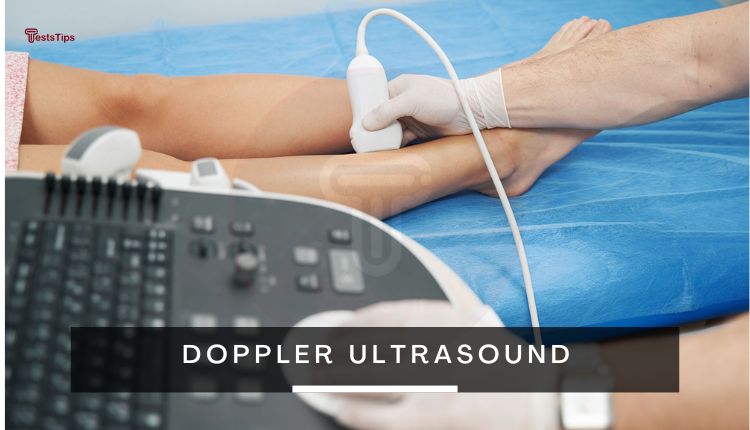Doppler Ultrasound. Benefits and Preparations
Doppler ultrasonography
Doppler Ultrasound is an imaging technique used to assess blood flow and provide a clearer picture of heart and vessel health. Learn more about it.

Table of Contents
Doppler Ultrasound is one of the most widely used technologies in medical imaging. It’s a non-invasive and painless procedure that can help diagnose conditions related to blood flow, such as deep vein thrombosis and arterial blockages. In this article, we’ll take a look at what Doppler ultrasound is, how it works, and its potential benefits.
What is Doppler Ultrasound?
Doppler ultrasound is a noninvasive test that uses sound waves to measure blood flows through the body’s blood vessels. It works by bouncing high-frequency sound waves off moving objects, such as red blood cells. The sound waves create echoes that are used to create images of the blood vessels and the direction and speed of the blood flow.
The Doppler ultrasound imaging can also show blockages in the blood vessels. It is a quick, painless way to check for problems with blood flow, including deep vein thrombosis (DVT), a potentially dangerous condition caused by a blockage in a major artery or vein.
The test is performed by a trained medical professional who will use a hand-held ultrasound scanner over the area of concern.
What Conditions Does It Diagnose?
Doppler ultrasonography is commonly used to diagnose a variety of conditions, including:
- Deep vein thrombosis.
- Peripheral artery disease.
- Abdominal aortic aneurysms.
- Assess the blood flow of the baby during pregnancy.
It is especially helpful in detecting blockages in the arteries and veins, as well as any narrowing in the vessels. In addition to being used in diagnosis, Doppler ultrasound can also be used to monitor treatment progress and determine if a condition is responding to therapy.
How Does It Differ From Traditional Ultrasound?
Doppler ultrasound differs from traditional ultrasound in that it uses sound waves to measure the movement of blood cells in the body’s circulatory system.
Unlike traditional ultrasound, which produces images of the organs and tissues, Doppler ultrasound creates images that show the direction and speed of blood flow.
It can also be used to detect blockages or narrowing in the arteries and veins, which is a common symptom of many cardiovascular diseases.
By calculating the velocity of the blood flow, doctors can get a better understanding of how well your blood is flowing and how much pressure is being placed on your blood vessels.
What Are the Risks?
Doppler ultrasound is generally safe and does not involve radiation, so it does not have the same risks as x-rays and CT scans. However, there are some potential risks associated with this procedure.
These include the risk of infection if the instrument comes in contact with an open wound, as well as the potential for tissue damage if the sound waves are too strong. Additionally, there could be risks associated with the use of contrast agents if they are used during your procedure.
It is important to speak to your healthcare provider about these potential risks before having a Doppler ultrasound.
What Should I Expect During a Doppler Ultrasound?
During a Doppler ultrasound:
- You will be asked to lie down on a comfortable examination table.
- A gel will be applied to your skin in the area to be examined.
- A special transducer will be used to send and receive sound waves.
- The sound waves are bounced off the blood cells, and their echoes are recorded and displayed on a computer screen.
- The technician may ask you to move or change positions during the exam.
- The entire procedure usually takes about 30 minutes.
Considerations for Pregnant Women

For pregnant women, Doppler ultrasound can provide valuable information about the health of the fetus and placenta. It can help to detect conditions such as placental insufficiency, which can cause preterm birth or intrauterine growth restriction.
A Doppler ultrasound can also detect fetal heart rate and blood flow, which can provide important clues about fetal health and development.
It is important to note that pregnant women should only have a Doppler ultrasound after consulting with their doctor.
Is there any preparations for the test?
You may need to do the following to get ready for a Doppler ultrasound:
Remove all clothing and jewellery from the test area.
Avoid smoking and other nicotine-containing products for at least two hours before your test. Nicotine constricts blood vessels, which can have an impact on your results.
You may be asked to fast (not eat or drink) for several hours prior to certain types of Doppler tests.
If you need to do anything special to prepare for your test, your doctor will let you know.
Results interpretations
If your results were out of the ordinary, it could mean you have:
- An artery blockage or clot.
- Blood vessel constriction.
- Unusual blood flow.
- An aneurysm.
- Blood flow abnormalities in unborn baby.
“Related: Everything You Need to Know About Serum Lipase Test“
How Accurate Are the Results?
It is important to note that the accuracy of results obtained from Doppler ultrasound depends on the skill of the technician performing the test and the quality of the ultrasound equipment.
In order to get accurate results, it is important that the technician has experience with Doppler imaging and that the ultrasound machine has been calibrated correctly.
Ultrasound technicians must also be familiar with any medical conditions that may affect the accuracy of the results. Additionally, some medical conditions can make it difficult to obtain a clear image of the blood vessels, which can lead to inaccurate results.
While Doppler ultrasound is generally a reliable imaging technique, it is important to keep in mind that there are certain factors that can affect its accuracy.
The Cost of a Doppler Ultrasound?
The cost of a Doppler ultrasound can vary depending on the type of test, the clinic or hospital you visit, and your insurance coverage. Generally, the cost is between $50 and $200. Some insurance companies may cover the entire cost of the procedure, while others may require you to pay a portion of the cost.
The significance of Doppler Ultrasound results will be determined by the area of the body that was tested. If you have any concerns about your results, speak with your doctor.
